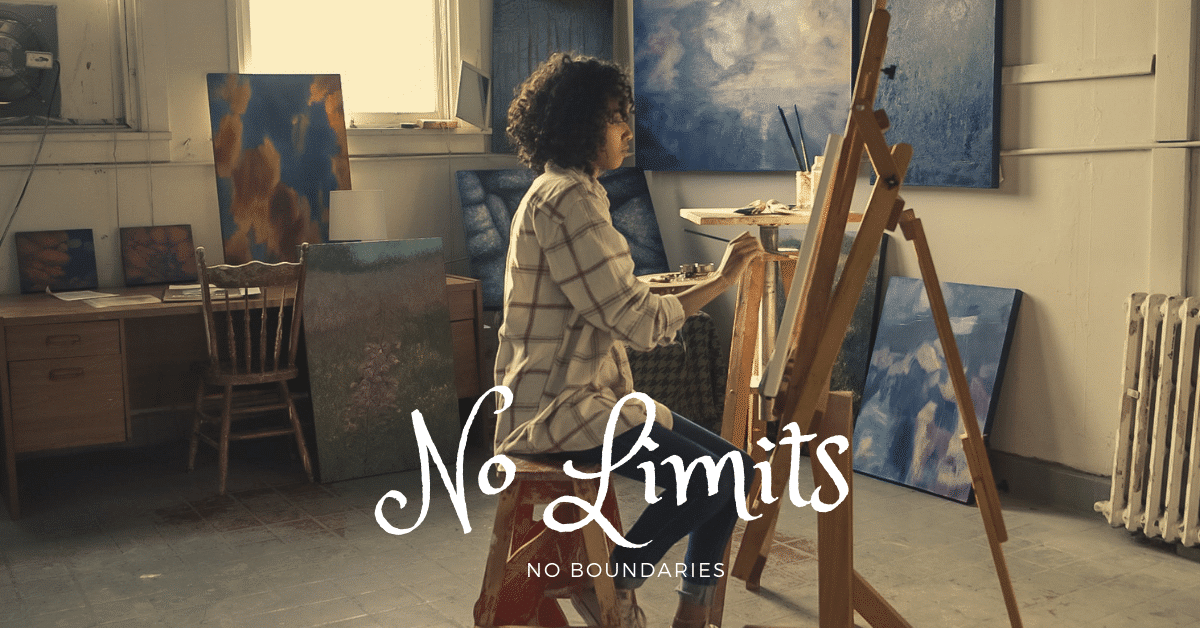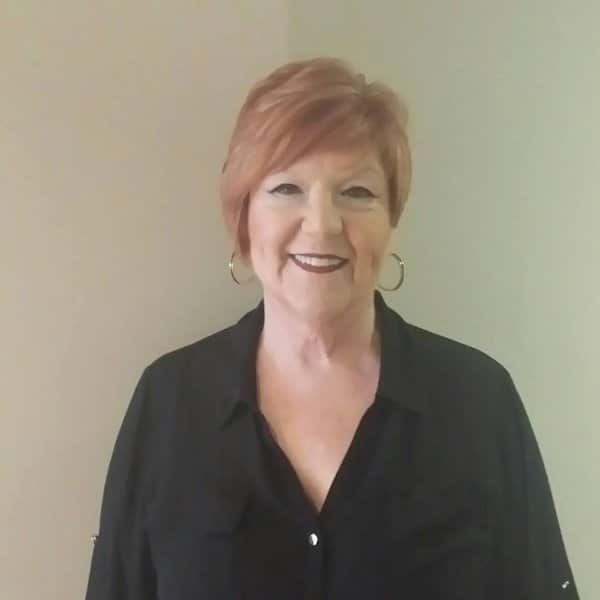What does your art say to the public? Do you have a strong message that utilizes story structure to clearly convey why your work is important, and why people must invest in it? CHF’s Marketing and Education Director Daniel DiGriz delves into questions posed by working artists who want to improve how they communicate with their audience. (This is part one of a three-part series. Read part two here.)
“As a working artist, I’m a small business owner. How can I compete with companies that have whole marketing teams behind them? And doesn’t a marketing team do more than just tell a story?”

First the good news: we’re never directly in competition with corporate marketing teams. We’re in competition with other visual artists to reach the art buyer. But that said, we can really take a note from the corporate playbook here, which is: corporate teams don’t try to go it alone.
Corporate teams hunt in packs. Corporate teams have a workforce with diverse skill-sets, multiple people who contribute to telling the brand’s story, and to distributing that through multiple marketing and sales channels. We simply translate that process differently for artists.
I work with large corporate teams. After getting the basic data about the business, the job becomes a deep dive into, “What is this company? Why does it exist? Who is its target audience? Why do those people actually care?” Then, we help them find or develop their brand story. The sales people need to translate that into sales collateral and how they pitch, as well as into language for proposals (e.g. when they’re proposing a specific project or seeking corporate allies–other companies to collaborate with and join them in their mission).
There are two stories: your core brand story, and the continuous story that you tell, which riffs off of that core story.
The marketing team then translates that in different ways: the webmaster distills it into a presentation in the form of a website, and the social-media team puts it into a social bio and riffs on it for ongoing social content.
We develop the core story first, which is static–the main narrative. It may get adjusted a little bit as we implement, experiment, and get feedback, but the idea is to get it right as early as we can. Then there’s the continuous story–the ongoing narrative, which gets told in many different ways, and not all at once. Parts of that continuous story are conveyed over time, whether through email marketing, social media marketing, or however else they do their marketing. So there are two stories: your core brand story, and the continuous story that you tell, which riffs off of that core story.
The Telling is Collaborative
Another part of this answer is something artists can really take advantage of–that’s collaborative storytelling. We see corporate teams doing this via their extensive marketing teams, but artists can do this by involving other artists and conducting skill exchanges.

For instance, you get another artist to come and do photography for your event because you need your hands (and brain) free. You need to mingle and schmooze, so they’re taking the photos or shooting video or conducting spot interviews. That becomes a simple skill exchange when you then go to their events and do something similar that they need but can’t do on their own; maybe you write a blog post for them, or create a series of social posts, reach out to your network and encourage attendance, or recruit people by managing their email list or talking to a contact in the press.
Skill exchanges are really important. Nobody hunts alone–ancient man didn’t go after saber-toothed tigers and mastodons by himself. A hunting party included scouts to find the animals, others to lure them out into the open, a guy to lob the rocks, and others to handle the spears. People had different roles. And eventually somebody else fashioned the sinews into bow strings, the bones into knife handles, or cooked it so that the tribe could eat!
The way we borrow a lesson from corporate marketing and sales strategies is to recruit our own tribe. We have to in order to be effective. Any artist with a tribe is going to be more effective than another artist trying to go it alone.
Be Selective–You Can’t Do It All
Where is your brand story most effectively told, and what marketing channels best serve your sales goals?
One of the pressures on visual artists that I would like to alleviate has to do with the fact that most marketing advice and marketing writing takes the form of “best practices,” issued to a generic audience with a one-size-fits-all strategy. You will hear things like, “You’ve got to be on Twitter and Instagram, and you’ve got to have an email list, and you’ve got to be working PR, and you’ve got to … ” The list goes on forever.
Marketing advice sells in part because it amps up fear and guilt, and a feeling of responsibility to do everything. That makes the marketing guy seem like an expert, but it’s a lousy shortcut for him that produces a strategy you can’t actually follow. Even corporate marketing teams can get spread thin–they can’t do it all. Or they’ve got too many balls in the air–they can’t do it all well. Just look at how most of those articles are titled: “10 Things You’re Not Doing Right in Your Marketing,” “5 Things You Have to Do to Succeed in Marketing.” They are fear-driven. I would counsel artists to avoid reading those list posts. They’re toxic.
Be Strategic–Avoid Formulas
Artists do need to figure out the channels in which they could be most effective. However, the answer to that is not based on feelings, or on off-the-cuff advice like, “Twitter will help you reach a bigger audience,” or “Instagram is visual.” Once you figure out what your brand story is, you need to figure out the best ways to tell it, and in which channels. So, for example, if your brand story is partly visual and largely narrative, maybe you belong more on Twitter, which is visual, too. But if your brand story is mostly visual and lightly narrative, then you might want to tell it on Instagram. Decide what is most suitable.
If my most important target audience is, say, museum curators, do they hang out on Twitter, or do their social-media managers hang out on Twitter?
The idea that you have to do everything is wrong. Even corporate audiences get told, quite correctly, “You don’t need to be everywhere.” It is not true that every corporate audience should have a Facebook page and be on Twitter. They hear that from amateur marketers who make their living providing that advice, because it creates demand for marketing professionals and their services. But somebody like me who believes in sales marketing alignment and brand story says, “Where is your brand story most effectively told, and what marketing channels best serve your sales goals?”
The choice of venues involves simple questions like, “Who’s my target audience and where do they hang out?” And here’s a key point: if my most important target audience is, say, museum curators, do they hang out on Twitter, or do their social-media managers hang out on Twitter? If it’s their social-media managers, you’re not reaching the curator, and that’s probably not the right venue for you. You need to figure out where the actual person you’re trying to reach with your story will be. It starts with the story. It starts with the narrative. All effective marketing comes out of that. The telling of it–the venue–is about where the audience lives and what is most likely to result, however circuitously, in revenue.
The principle is, “Revenue should drive everything,” including the choice of channels. The nature of your brand’s story and the habits of your audience determines those channels, and it should be strategic in a way that fits your business practice instead of some one-size-fits-all set of marketing best practices that applies to everybody. Most marketing activity lauded as statistically effective in marketing reports is derived from a cross-section of the whole market that include businesses that may be nothing like yours. The reports are written to apply to everybody, and as a result, the seemingly logical conclusions can end up applying to nobody in particular!








I can use the idea of exchanging with other artists to get things done neither can do alone!